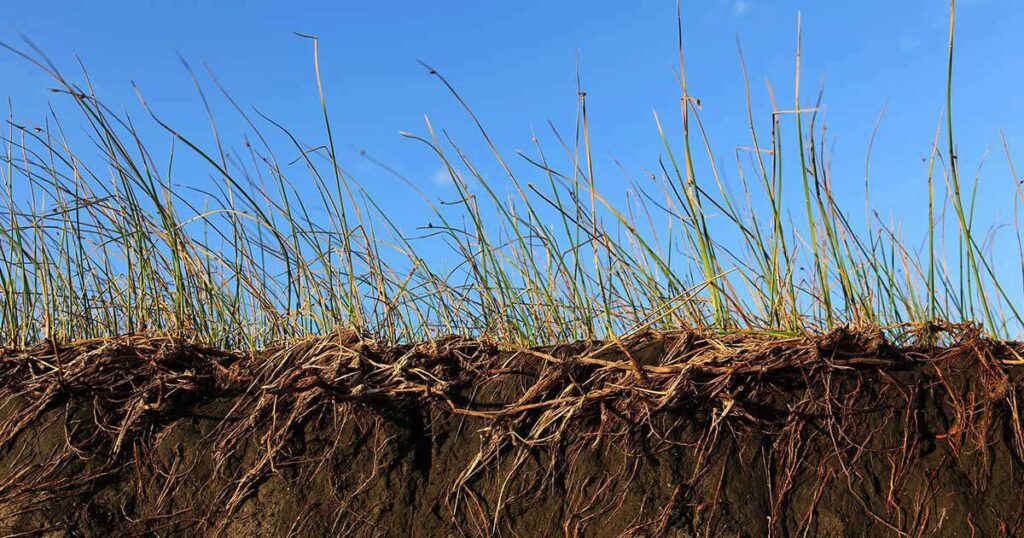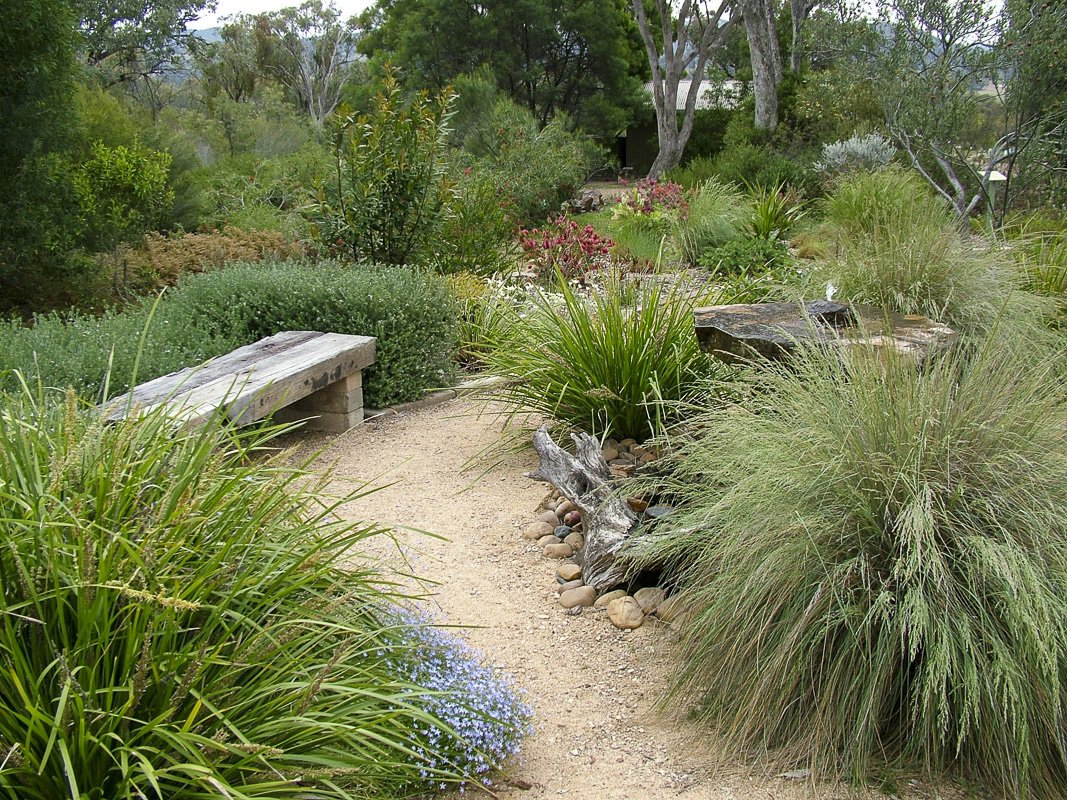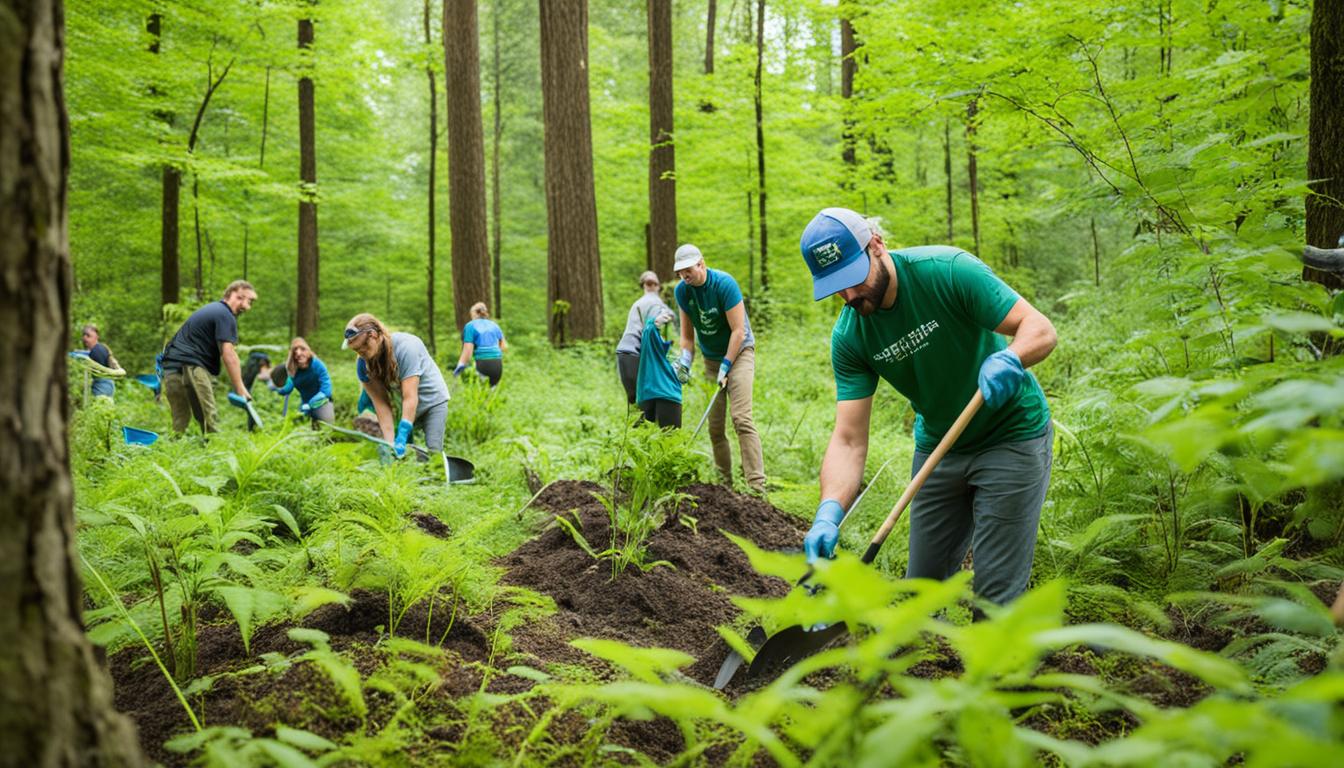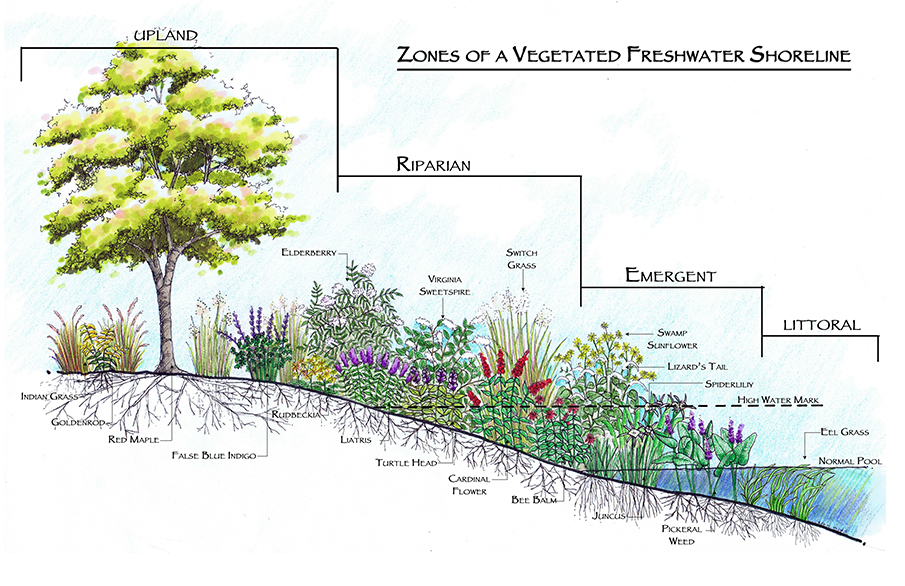
Planting for Erosion Control Projects: Safeguarding Your Land with Nature’s Solutions
Erosion, the relentless wearing away of land by natural forces, is a pervasive problem that affects landscapes worldwide. From gentle hillsides to steep embankments, the impact of wind, water, and even ice can be devastating, leading to loss of valuable topsoil, property damage, and environmental degradation. Fortunately, nature provides a powerful arsenal of solutions, and one of the most effective is the strategic use of vegetation. Planting for erosion control projects is a proactive and sustainable approach that harnesses the power of plants to stabilize soil, reduce runoff, and protect vulnerable areas. This comprehensive guide delves into the intricacies of planting for erosion control, offering practical advice, expert insights, and a wealth of information to help you implement successful projects.
Understanding the Problem: Why Erosion Control Matters
Before diving into the solutions, it’s crucial to understand the problem. Erosion is a natural process, but human activities often accelerate it, leading to accelerated soil loss. Deforestation, construction, agriculture, and even poorly planned landscaping can strip away the protective cover of vegetation, leaving the soil exposed and vulnerable. The consequences of unchecked erosion are far-reaching:
- Loss of Topsoil: Topsoil is the fertile upper layer of soil that supports plant growth. Erosion removes this vital layer, reducing agricultural productivity and hindering the ability of land to support vegetation.
- Property Damage: Erosion can undermine foundations, damage roads and infrastructure, and lead to landslides, resulting in costly repairs and potential hazards.
- Water Quality Degradation: Eroded soil carries sediment into waterways, clouding the water, harming aquatic life, and increasing the risk of flooding.
- Environmental Impacts: Erosion contributes to habitat loss, sedimentation of wetlands, and the overall degradation of ecosystems.
Recognizing the severity of these impacts underscores the importance of effective erosion control measures, and planting is a cornerstone of any successful strategy.
The Power of Plants: How Vegetation Controls Erosion
Plants act as natural engineers, employing a variety of mechanisms to combat erosion:
- Root Systems: The roots of plants act like a network of underground anchors, binding soil particles together and increasing the soil’s resistance to erosion. The density and depth of the root system are critical factors.
- Canopy Interception: Plant leaves and stems intercept rainfall, reducing the impact of raindrops on the soil surface. This helps to prevent the detachment of soil particles and reduces the amount of runoff.
- Reduced Runoff Velocity: Vegetation slows down the flow of water across the land surface, reducing its erosive power. This is particularly important on slopes, where water velocity can be significant.
- Improved Infiltration: Plant roots create channels in the soil, improving its ability to absorb water. This reduces runoff and increases the amount of water available for plant growth.
- Soil Enrichment: Plants contribute organic matter to the soil, improving its structure and fertility. This, in turn, enhances the soil’s ability to resist erosion.
By harnessing these natural processes, planting for erosion control offers a sustainable and environmentally friendly approach to protecting land and preserving valuable resources.
Planning Your Erosion Control Project: Key Considerations
Successful erosion control projects require careful planning and execution. Here are some key considerations to keep in mind:
1. Site Assessment
Thoroughly assess the site to understand the specific erosion challenges. Consider the following:
- Soil Type: Different soil types have varying erosion rates. Sandy soils are more susceptible to erosion than clay soils.
- Slope: Steeper slopes are more vulnerable to erosion. Measure the slope gradient to determine the severity of the problem.
- Climate: Rainfall patterns, wind intensity, and temperature fluctuations all influence erosion rates.
- Hydrology: Analyze water flow patterns, including drainage areas and the potential for runoff.
- Existing Vegetation: Evaluate the current vegetation cover and identify areas where planting is needed.
2. Plant Selection
Choosing the right plants is critical for success. Consider the following factors:
- Native Species: Native plants are typically well-adapted to the local climate and soil conditions, making them more resilient and requiring less maintenance.
- Root Depth and Density: Select plants with deep, extensive root systems to provide maximum soil stabilization.
- Growth Habit: Consider the plant’s growth habit, such as whether it is a groundcover, shrub, or tree. Different plants are suitable for different situations.
- Tolerance to Conditions: Choose plants that can tolerate the specific site conditions, such as drought, flooding, or poor soil quality.
- Availability: Ensure that the plants you select are readily available from local nurseries or suppliers.
3. Project Design
Develop a detailed plan that outlines the planting layout, plant spacing, and any other necessary erosion control measures. Consider the following:
- Planting Density: Determine the appropriate planting density to provide adequate soil coverage and erosion control.
- Planting Techniques: Choose the best planting techniques for the selected plants and site conditions.
- Erosion Control Structures: Consider incorporating other erosion control structures, such as terraces, retaining walls, or check dams, to enhance the effectiveness of the planting.
- Maintenance Plan: Develop a plan for ongoing maintenance, including watering, weeding, and fertilization.
4. Implementation
Follow the project design carefully during implementation. Key steps include:
- Site Preparation: Prepare the site by removing any existing vegetation that is not desired and amending the soil if necessary.
- Planting: Plant the selected plants according to the planting plan, ensuring proper spacing and depth.
- Watering: Water the newly planted vegetation regularly, especially during the establishment phase.
- Mulching: Apply mulch to help retain moisture, suppress weeds, and protect the soil surface.
5. Monitoring and Maintenance
Regular monitoring and maintenance are essential for the long-term success of the project. Monitor the following:
- Plant Health: Observe the plants for signs of stress, such as wilting, discoloration, or pest infestations.
- Erosion Control Effectiveness: Assess the effectiveness of the planting in controlling erosion.
- Weed Control: Control weeds to prevent them from competing with the planted vegetation.
- Irrigation: Adjust watering schedules as needed to ensure the plants receive adequate moisture.
- Fertilization: Fertilize the plants according to the recommended schedule to promote healthy growth.
Choosing the Right Plants: A Guide to Erosion Control Species
Selecting the right plants is the cornerstone of any successful erosion control project. Here are some categories of plants commonly used, along with examples of species that excel in this role:
Grasses and Groundcovers
Grasses and groundcovers are often the first line of defense against erosion, providing rapid soil coverage and stabilizing the surface. They are particularly effective on slopes and in areas with high runoff potential.
- Native Grasses:
- Switchgrass (Panicum virgatum): A tall, clumping grass with deep roots, excellent for stabilizing slopes and providing wildlife habitat.
- Little Bluestem (Schizachyrium scoparium): A drought-tolerant grass that forms dense clumps, ideal for erosion control in dry areas.
- Buffalo Grass (Bouteloua dactyloides): A low-growing, sod-forming grass that is well-suited for erosion control in arid regions.
- Groundcovers:
- Creeping Thyme (Thymus serpyllum): A low-growing, aromatic groundcover that forms a dense mat, ideal for sunny slopes.
- Wild Strawberry (Fragaria virginiana): A native groundcover that spreads readily, providing excellent soil coverage and attractive berries.
- Vinca Minor (Periwinkle): A fast-spreading evergreen groundcover.
Shrubs
Shrubs provide a more permanent solution for erosion control, offering deeper roots and greater resistance to erosion than grasses. They also add visual interest and provide habitat for wildlife.
- Native Shrubs:
- Beach Plum (Prunus maritima): A salt-tolerant shrub that is well-suited for coastal erosion control.
- Bayberry (Myrica pensylvanica): A shrub that tolerates a wide range of soil conditions and provides excellent erosion control on slopes.
- Ninebark (Physocarpus opulifolius): A hardy shrub with attractive foliage and exfoliating bark, suitable for stabilizing stream banks.
Trees
Trees offer the most long-term solution for erosion control, with deep root systems that provide exceptional soil stabilization. They also provide shade, reduce wind erosion, and enhance the aesthetic value of the landscape.
- Native Trees:
- Willows (Salix spp.): Fast-growing trees with extensive root systems, excellent for stabilizing stream banks and wet areas.
- Eastern White Pine (Pinus strobus): A tall, evergreen tree that provides excellent erosion control on slopes.
- River Birch (Betula nigra): A tree that tolerates wet conditions and provides erosion control along stream banks.
Specific Applications: Erosion Control Projects for Different Environments
The best approach to planting for erosion control depends on the specific environment and the challenges faced. Here are some examples of projects and the plants best suited for them:
1. Streambank Stabilization
Streambanks are particularly vulnerable to erosion, especially during periods of high water flow. Planting along streambanks helps to stabilize the soil, reduce bank erosion, and protect water quality. The best plants for streambank stabilization typically have strong, fibrous root systems that can withstand the force of flowing water. Examples include:
- Willows: Their fast growth and extensive root systems make them ideal for stabilizing streambanks.
- River Birch: Tolerates wet conditions and helps to bind the soil.
- Grasses: Species such as Switchgrass can be used in conjunction with woody plants to provide immediate cover.
2. Slope Stabilization
Slopes are prone to erosion due to the force of gravity and the impact of rainfall. Planting on slopes helps to slow down runoff, trap sediment, and stabilize the soil. The best plants for slope stabilization typically have deep roots that can anchor the soil and hold it in place. Examples include:
- Native Grasses: Switchgrass and Little Bluestem are excellent choices.
- Shrubs: Bayberry and other native shrubs can provide long-term stability.
- Trees: Eastern White Pine can provide a permanent solution on larger slopes.
3. Coastal Erosion Control
Coastal areas are particularly vulnerable to erosion due to the combined forces of wind, waves, and tides. Planting in coastal areas requires salt-tolerant plants that can withstand harsh conditions. Examples include:
- Beach Plum: A shrub that is well-adapted to coastal environments.
- Sea Oats (Uniola paniculata): A native grass that is excellent for stabilizing sand dunes.
- Saltmeadow Cordgrass (Spartina patens): A grass that thrives in salt marshes and helps to reduce erosion.
4. Roadside Erosion Control
Roadsides are often prone to erosion due to the disturbance of soil during construction and the impact of runoff from roadways. Planting along roadsides helps to stabilize the soil, reduce runoff, and improve the aesthetic value of the landscape. The best plants for roadside erosion control typically have low maintenance requirements and can tolerate a variety of soil conditions. Examples include:
- Native Grasses: Little Bluestem and other native grasses can provide effective soil cover.
- Wildflowers: Native wildflowers can add visual interest and attract pollinators.
- Shrubs: Low-growing shrubs can help to stabilize slopes and reduce runoff.
Beyond Planting: Complementary Erosion Control Techniques
While planting is a cornerstone of erosion control, it’s often most effective when combined with other techniques:
- Mulching: Applying a layer of organic mulch, such as wood chips or straw, helps to protect the soil surface from the impact of raindrops, retain moisture, and suppress weeds.
- Terracing: Terracing involves creating a series of level platforms or steps on a slope to reduce the slope gradient and slow down runoff.
- Retaining Walls: Retaining walls are used to stabilize steep slopes and prevent soil from sliding downhill.
- Check Dams: Check dams are small dams built across a drainage channel to slow down the flow of water and trap sediment.
- Geotextiles: Geotextiles are synthetic fabrics used to stabilize soil and prevent erosion.
The best combination of techniques will depend on the specific site conditions and the severity of the erosion problem.
Maintenance and Long-Term Success
Erosion control projects require ongoing maintenance to ensure their long-term success. Regular maintenance helps to keep the plants healthy and effective in controlling erosion. Here are some key maintenance tasks:
- Watering: Water the plants regularly, especially during the establishment phase and during periods of drought.
- Weeding: Control weeds to prevent them from competing with the planted vegetation.
- Fertilizing: Fertilize the plants according to the recommended schedule to promote healthy growth.
- Pruning: Prune the plants as needed to maintain their shape and encourage growth.
- Monitoring: Regularly monitor the site for signs of erosion and take corrective action as needed.
By following a regular maintenance schedule, you can ensure that your erosion control project remains effective for years to come.
The Environmental and Economic Benefits of Planting for Erosion Control
Planting for erosion control is not just a practical measure; it offers a multitude of environmental and economic benefits:
- Environmental Benefits:
- Improved Water Quality: Reduces sediment runoff, protecting rivers, lakes, and oceans from pollution.
- Enhanced Habitat: Creates habitats for wildlife, supporting biodiversity.
- Carbon Sequestration: Plants absorb carbon dioxide from the atmosphere, helping to mitigate climate change.
- Soil Health: Improves soil structure and fertility, leading to healthier ecosystems.
- Economic Benefits:
- Reduced Property Damage: Prevents costly repairs to infrastructure and buildings.
- Increased Land Value: Protects and enhances the value of land.
- Reduced Maintenance Costs: Sustainable solutions like planting often require less long-term maintenance than hard engineering solutions.
- Cost Savings: Prevents the need for expensive dredging operations and other remediation efforts.
Investing in planting for erosion control is an investment in the future, benefiting both the environment and the economy.
Conclusion: Embracing Nature’s Power for a Sustainable Future
Erosion is a significant challenge, but it is one that we can effectively address through the strategic use of vegetation. Planting for erosion control is a powerful and sustainable approach that offers a multitude of benefits, from protecting land and property to enhancing water quality and supporting biodiversity. By understanding the problem, planning carefully, selecting the right plants, and providing ongoing maintenance, you can successfully implement erosion control projects that will protect your land for generations to come. Embrace the power of nature and create a more resilient and sustainable future for all.



